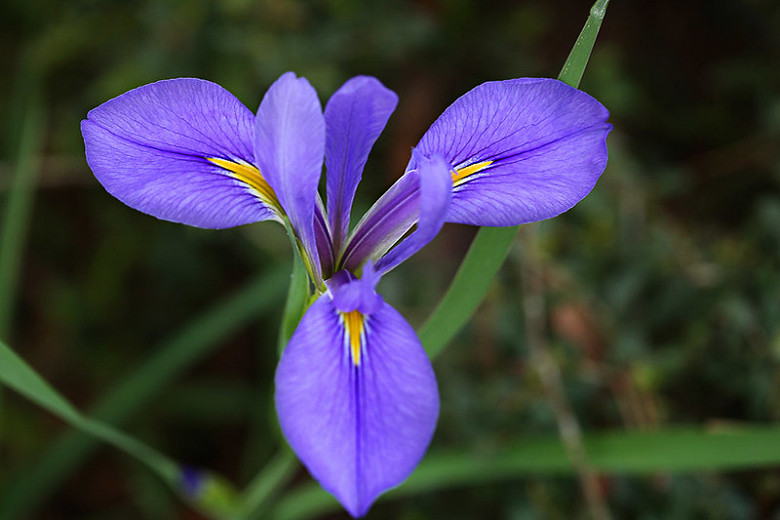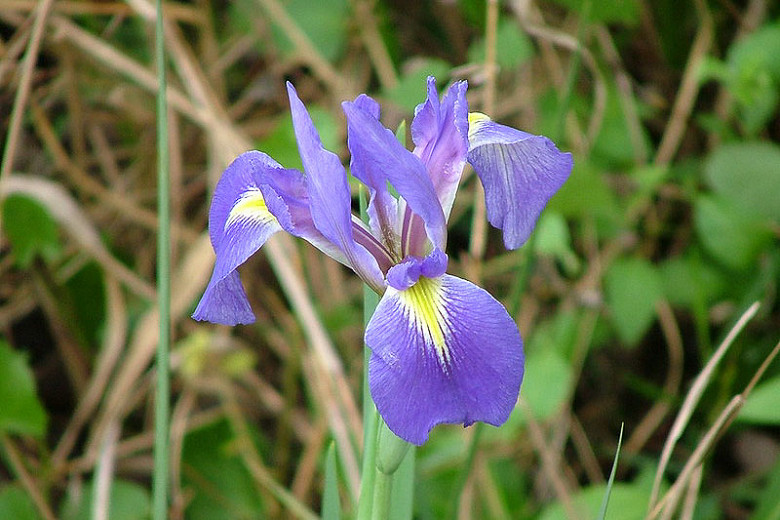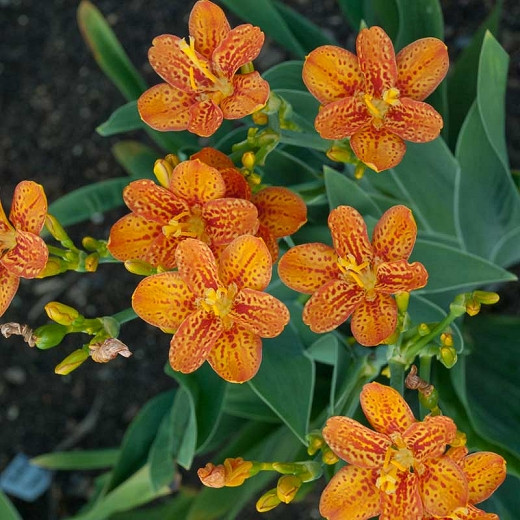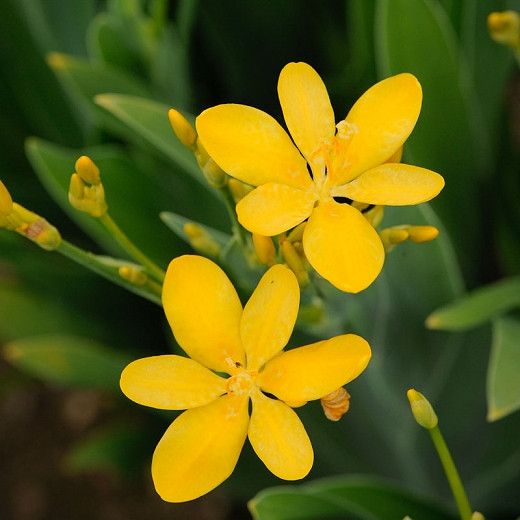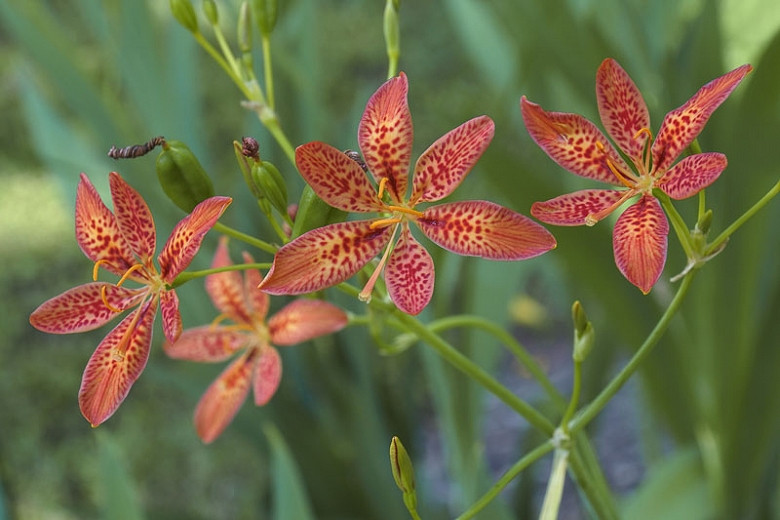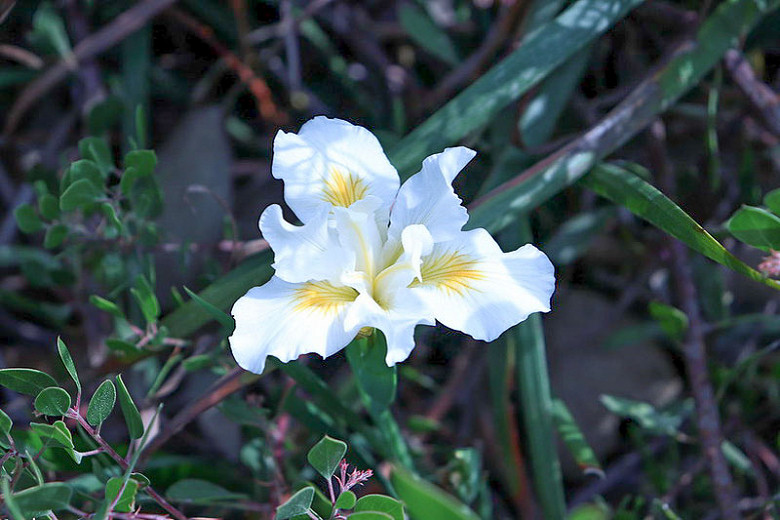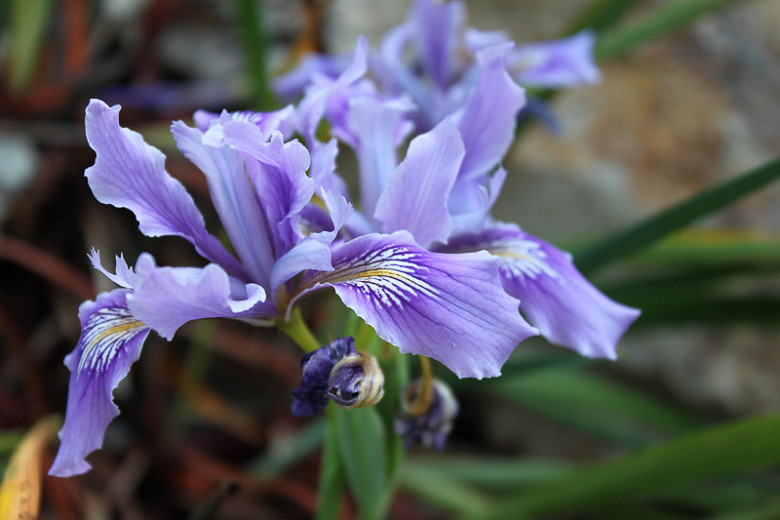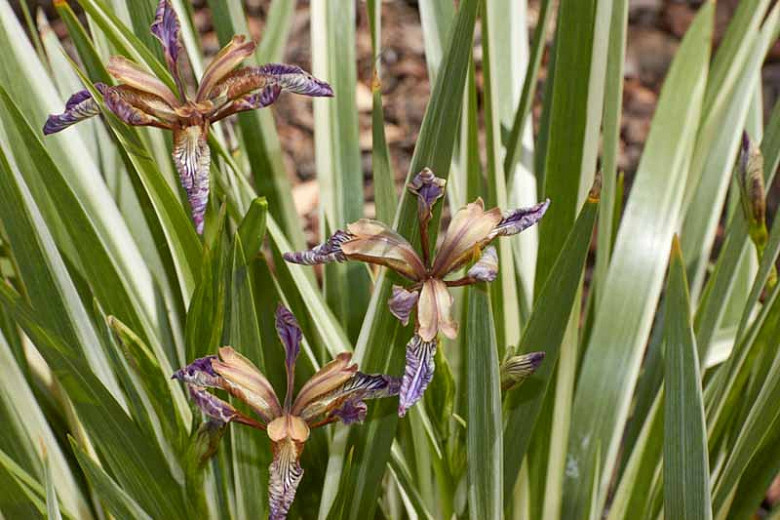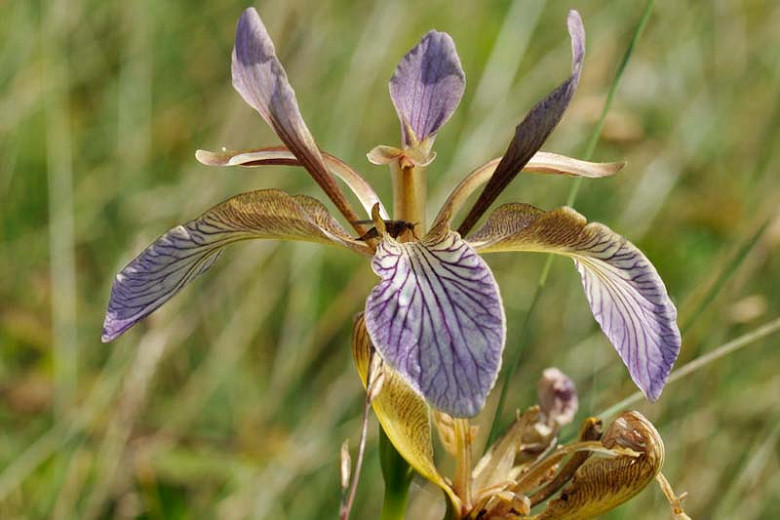Iris hexagona (Dixie Iris)
Iris hexagona (Dixie Iris) is a rhizomatous perennial boasting delicate blue to violet (rarely white) flowers, 3.5 in. (9 cm), in mid to late spring. The mildly fragrant flowers feature three smaller and narrower standards (petals) than the three widely spreading and arching falls (sepals). The signal is a rich yellow stripe or spot on the central ridge. The blossoms are carried on stems above the foliage clump of stiffly erect, yellow-green to bright green, sword-shaped leaves, 2-3 ft. long (60-90 cm). The leaves wither and die after flowering, but new leaves emerge in fall for the following year. Arising from shallowly rooted, branching rhizomes, Dixie Iris can spread easily making it good for naturalizing. Native to the Southeastern United States, Dixie Iris occurs naturally in wet meadows, marshes and bogs. Dixie Iris is one of five species of iris that make up the Louisiana Iris group. It is currently considered to be one of the rarest of the irises native to the U.S. It is suitable for water gardens, bog gardens or moist to wet areas near ponds and streams.
- Grows up to 3-4 ft. tall (90-120 cm) and 12-18 in. wide (30-45 cm). Shallow rooted rhizomes will spread to form colonies.
- Performs best in full sun in slightly acidic, moist to wet soils. Tolerates some part shade. May be grown in several inches of shallow water.
- A welcomed addition to beds and borders with consistent moisture, bog gardens, rain gardens, water gardens and near streams or ponds, where it will provide excellent color contrast.
- No serious pest or disease issues. Keep an eye out for leaf spot, bacterial soft rot, iris rust, mosaic viruses, slugs, snails, cutworms, whiteflies, leaf miners, aphids and thrips.
- All parts may cause discomfort if ingested. Wear gloves and other protective equipment when handling.
- Toxic to dogs, toxic to cats, toxic to horses.
- Propagate by division of the rhizomes.
- Native to the Southeastern United States.
Requirements
| Hardiness | 7 – 9 |
|---|---|
| Plant Type | Aquatic Plants, Perennials |
| Plant Family | Iris – Other |
| Exposure | Full Sun, Partial Sun |
| Season of Interest | Spring (Mid,Late) |
| Height | 3' – 4' (90cm – 120cm) |
| Spread | 1' – 2' (30cm – 60cm) |
| Spacing | 18″ – 24″ (45cm – 60cm) |
| Water Needs | Average, High |
| Maintenance | Average |
| Soil Type | Clay, Loam |
| Soil pH | Acid, Neutral |
| Soil Drainage | Moist but Well-Drained, Moisture Retentive, Poorly Drained |
| Characteristics | Fragrant, Showy |
| Native Plants | United States, Midwest, Missouri, Southeast, Alabama, Arkansas, Florida, Georgia, Louisiana, Mississippi, South Carolina, Southwest, Texas |
| Tolerance | Wet Soil |
| Garden Uses | Beds and Borders, Bog Gardens, Ponds and Streams, Rain Gardens, Water Gardens |
| Garden Styles | Informal and Cottage |
